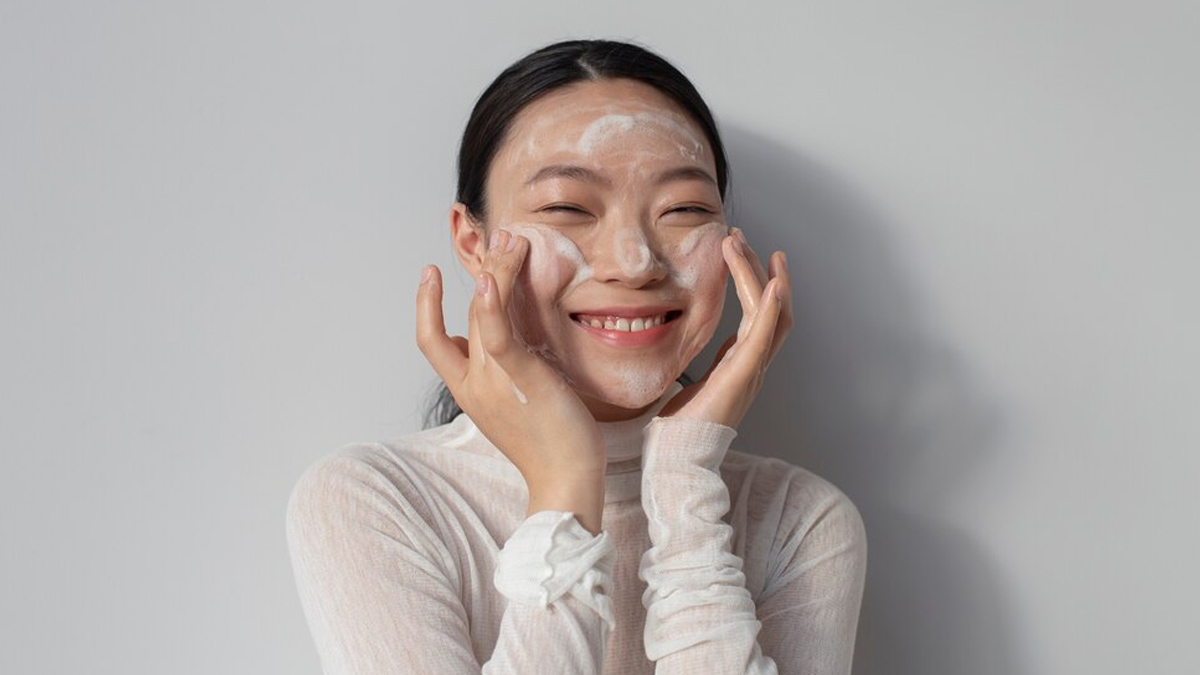
Skincare routines have evolved over the years, with techniques from around the world gaining popularity. One such method is the 4-2-4 rule, a Korean skincare technique that has taken the beauty world by storm. But what exactly is it, and how does it work? The 4-2-4 rule is a detailed cleansing routine that involves a four-minute oil massage, a two-minute cleanse with a water-based cleanser and a four-minute rinse with warm and cold water. Read ahead to know about the Japanese double cleanse routine, and what experts have to say about it.
Table of Content:-
What is the 4-2-4 Rule?
The 4-2-4 rule is a structured skincare method designed to thoroughly cleanse and hydrate the skin. Dr Savitha, Consultant Dermatologist at Render Clinic, Clinical Advisor at CHOSEN, Chennai, explains “The 4-2-4 rule is designed to provide a deep cleanse while maintaining the skin’s hydration. However, it’s not a one-size-fits-all solution. People with acne-prone or sensitive skin should approach this method with caution.”
- Four-Minute Oil Massage: The process begins with a four-minute massage using an oil-based cleanser. This step helps dissolve makeup, sunscreen, and excess sebum, which are oil-based impurities.
- Two-Minute Water-Based Cleanse: Next, a water-based cleanser is used for two minutes to remove water-based impurities like sweat and dirt.
- Four-Minute Rinse: The final step involves rinsing the face for four minutes, alternating between warm and cold water. Warm water opens up the pores, while cold water helps tighten them, leaving the skin refreshed.
The Connection to the Japanese Double Cleanse Routine

The 4-2-4 rule shares similarities with the Japanese double cleanse routine, which also involves two steps: an oil-based cleanse followed by a water-based cleanse. The double cleanse method is a staple in Japanese skincare, known for its effectiveness in removing impurities without stripping the skin of its natural oils. Dr Savitha notes, “Both the 4-2-4 rule and the Japanese double cleanse aim to achieve a thorough cleanse. However, the 4-2-4 rule adds an extended massage and rinse, which can be beneficial for some but overwhelming for others.”
ALSO READ: Dark Underarms? Expert Explains Why Brightening Deodorants Do Not Work
Benefits of the 4-2-4 Rule
- Deep Cleansing: The oil massage effectively removes stubborn makeup and sunscreen, while the water-based cleanser tackles sweat and dirt.
- Improved Hydration: The extended rinse with warm and cold water helps maintain the skin’s moisture balance.
- Enhanced Blood Circulation: The massage component can boost blood flow, giving the skin a healthy glow.
Potential Drawbacks
While the 4-2-4 rule has its benefits, it’s not without risks, especially for certain skin types.
- Risk of Over-Cleansing: Excessive cleansing can disrupt the skin’s natural barrier, leading to dryness and irritation.
- Clogged Pores: For acne-prone skin, the oil massage may clog pores and worsen breakouts.
- Time-Consuming: The 10-minute routine may not be practical for everyone, especially those with busy schedules.
What Does Science Say?
A study published in the Journal of Cosmetic Dermatology examined the effects of double cleansing on skin hydration and barrier function. The study found that while double cleansing effectively removed impurities, over-cleansing could compromise the skin’s natural oils. The researchers recommended tailoring the cleansing routine to individual skin types to avoid adverse effects.
ALSO READ: Hyperpigmentation Causing Darkness Around Lips? Try These Home Remedies To Get Rid of It
Conclusion
The 4-2-4 rule is a meticulous skincare technique that promises deep cleansing and hydration. While it shares similarities with the Japanese double cleanse routine, its extended steps may not suit everyone. As Dr Savitha advises, “Skincare is not about following trends blindly. It’s about understanding your skin’s unique needs and adapting routines accordingly.” Always consult a dermatologist if you’re unsure about trying a new skincare routine.
Also watch this video
How we keep this article up to date:
We work with experts and keep a close eye on the latest in health and wellness. Whenever there is a new research or helpful information, we update our articles with accurate and useful advice.
Current Version